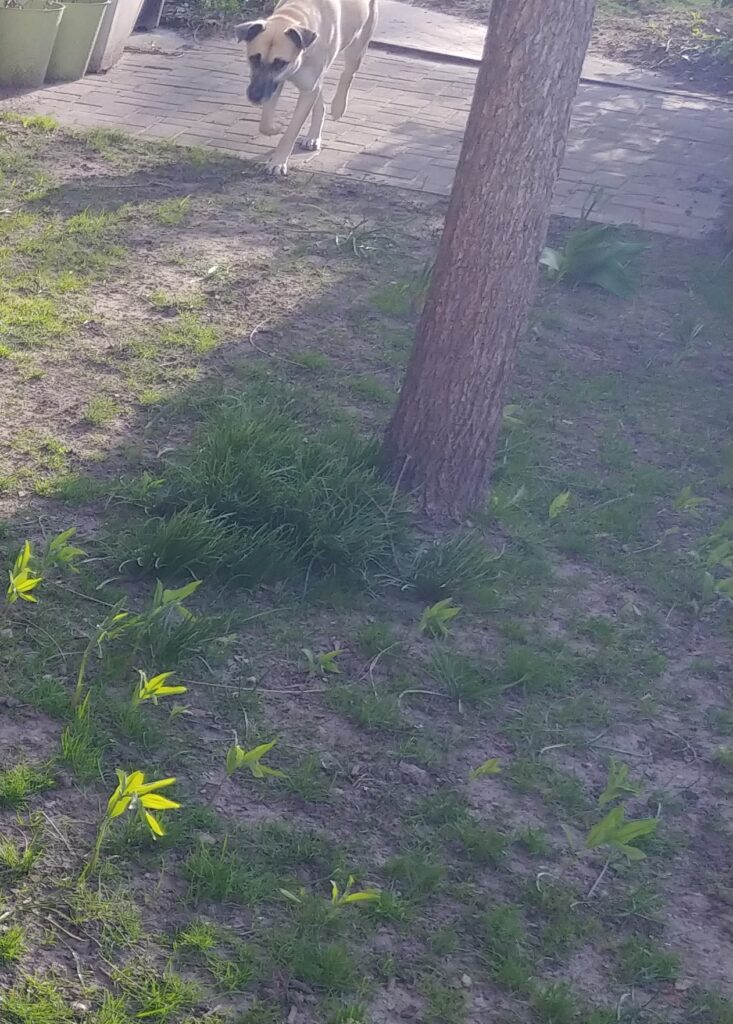
I have been trying for two years to turn a newly fenced patch of garden into lawn for the family to play, beside our small downtown semi, with limited success. The area was formerly mostly periwinkle, some irises, some Solomon seal and some sumac. We moved some of the plants and kept the largest sumac tree intact, but would like to turn the area beneath and around that sumac into a lawn (perhaps grass and clover mixed). the area is now a patchy mix of grass, Solomon seal, bare soil, a couple of rogue tulips, a patch of clover, etc. Our garden centre looked at some photos of the bare patches of soil and mix of grass and weeds, and advised that soil is compacted and suggested starting over: roto tilling the area, spreading new soil, raking and seeding. Do I risk killing the lovely tall sumac (20 feet) if I roto till all around it? How far back from the tree should I stay, to protect enough roots? Thank you so much!
Thank you for consulting with Toronto Master Gardeners regarding your project. You are correct to consider carefully tilling the soil around trees. Trees absorb nutrients and water largely from small hair-like rootlets at the ends of their larger roots- not from the roots themselves. These rootlets are found in abundance around what is called the drip line of tree. The drip line is defined as the ground beneath where the tree’s branches end. You should not till or even store heavy equipment in the space between the tree and the drip line. To do so may damage the roots hairs by cutting them or by compacting the soil preventing proper aeration, and moisture/nutrient Tree care.
Your note suggests that your soil may be compacted. That is possible. I suggest that you continue to remove manually obvious weeds and plants under the tree; then consider aerating the soil by puncturing the soil around the tree with a pitchfork or a tool rented for this procedure Aeration. The object is to create small holes that allow air, water and nutrients to penetrate to the rootlets or the tree and to encourage the rooting of your new grass seeds. Do not till. Rake and then add a combination good quality bagged soil and manure to the depth of 4-6 cm from the trunk to the drip line. Earth worms and other soil insects will help incorporate this healthy soil into the compacted earth. Do not mound soil around the tree. There should be no need to ‘dig the soil in’.
As you desire a lawn, you should select good quality grass seeds for shade or semi shade (with clover which requires reseeding White clover ) and spread these seeds on your new soil around the tree. Water well according to seed directions. Please avoid extensively watering the base of the trunk as it may encourage fungal diseases.
In practice, Master Gardeners no longer encourage tilling because it deteriorates soil structure. As your newly fenced-in space sounds small, consider treating the entire area in the same manner as suggested above and avoid the tiller all together. Please control the traffic on it until grass looks strong enough to cut. And leave it on the longish side especially for the first year. Don’t forget to fall fertilize naturally with manure and a sprinkling of compost or shredded leaf mulch (or similar products). Good luck.

